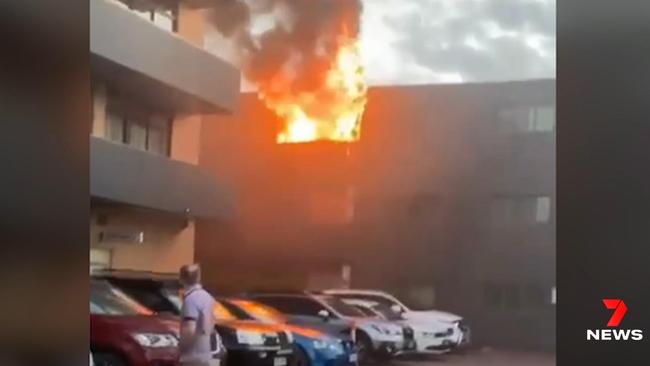RAH failed to implement catastrophe plan after hotel fire because no one checked phone
A probe into how RAH staff responded to a huge hotel blaze has found the hospital’s catastrophe plan was never activated – because no one saw a crucial text message.
SA News
Don't miss out on the headlines from SA News. Followed categories will be added to My News.
An investigation into the Royal Adelaide Hospital’s response to a hotel fire at North Adelaide in April found it failed to implement its catastrophe plan because no one checked a mobile phone.
The RAH’s ED was supposed to be ready for an influx of patients under the disaster plan but no one looked at a mobile phone with a text message about the looming rush “until long after the catastrophe was over”, checks by the SA Salaried Medical Officers Association found.
Three men were rushed to the RAH’s intensive care unit after the fire at the Comfort Adelaide Meridien Hotel on Melbourne St on April 24 this year.
Doctors involved say “there is a level of disarray in the RAH administration … the lack of an integrated disaster plan could have gone horribly wrong”.
The report sent to SafeWork SA states: “The RAH ED were completely unaware that the escalation process had occurred until after the disaster had been downgraded.”
Doctors told SASMOA the issue of ensuring the disaster plan is implemented as a priority when a catastrophic event happened had been on the RAH “risk register” for at least four years without resolution.

Since April SASMOA has received SafeWork SA permission to have multiple site visits to the RAH ED following repeated complaints from staff about overcrowding causing safety issues.
SA Health released a statement saying: “An External Emergency was called at CALHN at 7.20am in response to a hotel fire in North Adelaide in April. The External Emergency was stood down at 8.56am.
“This was the appropriate response by CALHN to this emergency and all patients were immediately treated.”
However, no-one from management physically told ED staff of the external emergency which would trigger an internal emergency plan where frontline doctors and nurses clear the ED as much as possible and prepare for an influx of multiple casualties.
Instead a text was sent to an unattended mobile phone, according to the SASMOA report.
As well as the RAH’s failure to implement its disaster plan after the blaze, documents obtained by The Advertiser show a litany of other problems, which have been referred to SafeWork SA beyond record ramping, including:
■ SA Health allegedly faking the number of emergency department beds at Flinders Medical Centre to make it appear it has more than are available;
■ Flinder Medical Centre turning away an ectopic pregnancy emergency due to lack of space;
■ Statewide ramping – not just at metro EDs – despite the government’s promise to “fix ramping”.

It follows a survey of public hospital doctors which found 82 per cent felt the system was at crisis point or not coping, while 80 per cent said they as doctors were not coping or were at risk of not coping.
One RAH site visit found 90 people in the 69-capacity ED including 45 who had been treated but were stuck there due to no available ward beds. One person had been waiting 65 hours for a suitable mental health bed. This in turn added to ramping and left other patients stuck in the waiting room.
Doctors told the SASMOA investigator adverse incidents included an elderly male patient who had been ramped and ended up with a perforated bowel and a young woman who deteriorated so badly while ramped she ended up in the Intensive Care Unit.
Doctors are calling for a “transit lounge” for ED of patients who have been treated and are waiting for a ward bed, in order to improve patient flow and address ramping.
It has since soared to record levels.
The SASMOA report is now with SafeWork SA.





